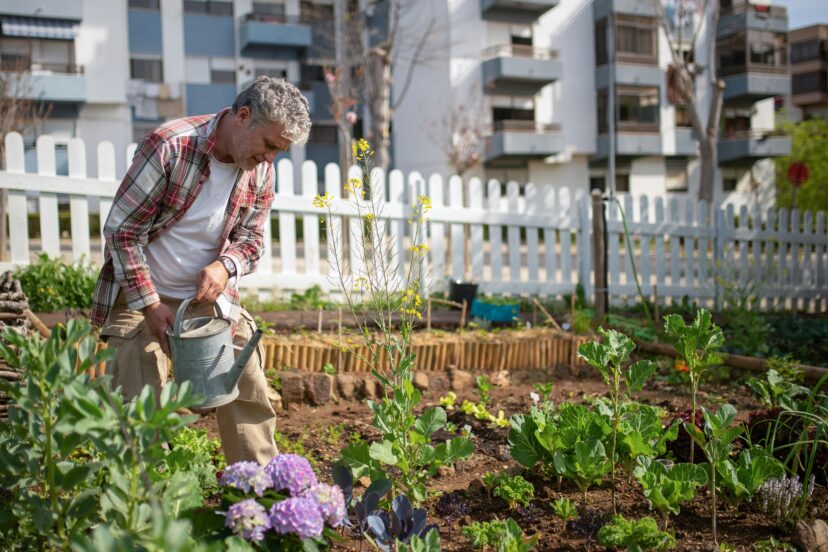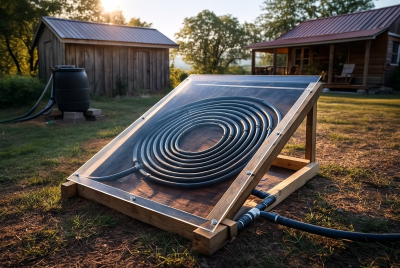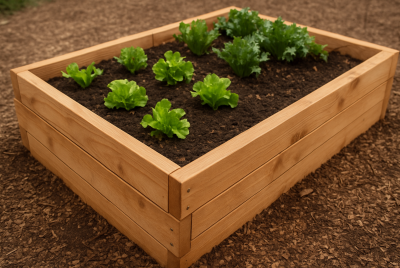Companion Planting Guide: 5 Crop Combinations That Help Each Other Thrive
We may earn a commission for purchases made using our links. Please see our disclosure to learn more.
Many gardeners spend hours working in their gardens, only to feel let down when plants don’t grow well or bugs ruin their crops. It can feel like your garden is fighting against you instead of growing strong. Without a simple plan, you waste time and energy on plants that don’t help each other. Companion planting fixes this by using old, proven ideas that gardeners and homesteaders have trusted for years. When you grow certain plants together, they can keep pests away, bring in helpful insects, make the soil better, and give you more food in the same space. This companion planting guide shares five easy plant pairings to try this season, plus simple tips and tools to help you grow a healthy garden that works with nature, not against it.
Why Companion Planting Matters for Gardeners and Homesteaders
If you wish to reduce pesticides and work with nature, this companion planting guide should be at the top of your list. This strategy capitalizes on the natural interactions between specific plants, saving you time, money, and irritation.
For example, some plants emit odors that confound pests or attract beneficial insects, keeping harmful bugs at far. Others increase soil fertility by fixing nitrogen or providing ground cover that retains moisture and discourages weeds. When you design your garden with these relationships in mind, you’ll naturally create a system that requires fewer synthetic inputs.
Homesteaders, especially, appreciate how companion planting fits into a sustainable, self-reliant lifestyle. Instead of buying costly fertilizers or pesticides, your garden becomes its own little ecosystem — productive, balanced, and beautiful. If you’re exploring other ways to live more sustainably, check out this helpful guide to Vegan Homesteading for more ideas.
So, whether you have a large property or a little backyard raised bed, these five companion combinations are ideal for both new and experienced growers.
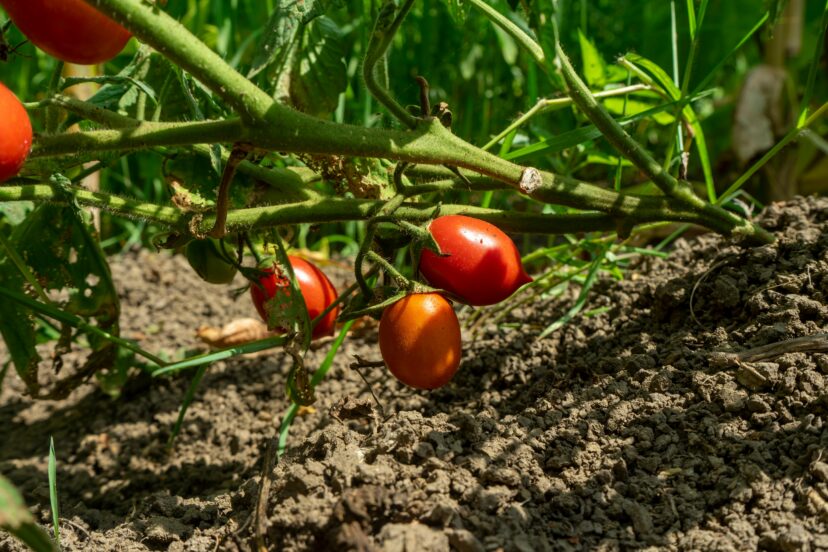
1. Tomatoes and Basil: A Classic Pairing
Tomatoes and basil are a well-known combination, and there’s a reason for it. Basil naturally repels pests such as aphids, whiteflies, and hornworms, which love to feast on vulnerable tomato leaves. Basil is said by many gardeners to improve tomato flavor. While this is debatable scientifically, it’s clear why you’d want to grow your salad toppings together!
How to Plant Them Together
When planting tomatoes, tuck a few basil plants near the base. Be sure to give each plant enough room to breathe — about 12–18 inches apart — to avoid fungal diseases. To keep leaves dry, water them near the soil’s surface rather than from above.
Pro tip: Adding a border of marigolds nearby can enhance the pest-deterring effect even more. Marigolds produce a scent that repels nematodes and other insects that can damage roots.
2. Corn, Beans, and Squash: The Three Sisters
For centuries, Indigenous peoples in North America perfected the “Three Sisters” planting method, which combines corn, beans, and squash in one harmonious grouping.
Here’s how they help each other:
- Corn acts as a living trellis for the beans to climb.
- Corn and squash naturally benefit from the nitrogen that beans fix in the soil.
- Squash spreads its large leaves over the ground, shading out weeds and keeping the soil moist.
How to Plant the Three Sisters
Start by planting corn seeds in mounds or small clusters. Wait until the corn grows to about six inches high, then sow bean seeds around the base of each plant. Lastly, scatter squash seeds all around the mounds. Make sure each crop has enough sunlight and room to spread out.
This ancient method maximizes space and creates a low-maintenance polyculture that needs minimal input once established — a true gift for busy homesteaders.
3. Carrots and Onions: Pest-Busting Partners
If you’ve ever struggled with carrot flies or onion maggots, you’ll love this pairing. Carrots and onions help protect each other from common pests through their strong scents, which confuse insects that rely on smell to find their favorite plants.
How to Plant Them Together
Try interplanting rows: sow a row of carrots, then a row of onions, and repeat. This works beautifully in raised beds and smaller gardens where space is precious. Both crops like loose, well-drained soil, so prepare your beds accordingly.
Carrots and onions grow at different rates, which makes harvesting more efficient too. Pull mature onions while carrots continue to develop, giving them more space.
4. Cucumbers and Nasturtiums: A Blossoming Friendship
Did you know that flowers can be one of the best companions for your vegetables? Nasturtiums are more than just pretty faces — they act as sacrificial plants by luring aphids away from your cucumbers. They also attract pollinators like bees, which can help boost cucumber yields.
How to Plant Them Together
Plant nasturtiums around the edges of your cucumber patch. These trailing flowers will spill over raised beds or garden borders, creating a natural pest barrier while adding pops of color.
Plus, nasturtiums are edible! Their peppery leaves and flowers make a delicious addition to summer salads.
5. Lettuce and Radishes: Fast Friends
If you’re new to companion planting, this pair is a great place to start. Radishes sprout quickly and help loosen the soil for slow-growing lettuce roots. The leafy greens also benefit from the shade that radishes provide during hot spells.
How to Plant Them Together
Sow radish seeds alongside lettuce every few weeks for a steady harvest throughout the season. When you pull mature radishes, you’ll open up space for young lettuce to flourish. This dynamic duo thrives in containers or small raised beds too, making it perfect for urban gardeners and small-space homesteaders alike.
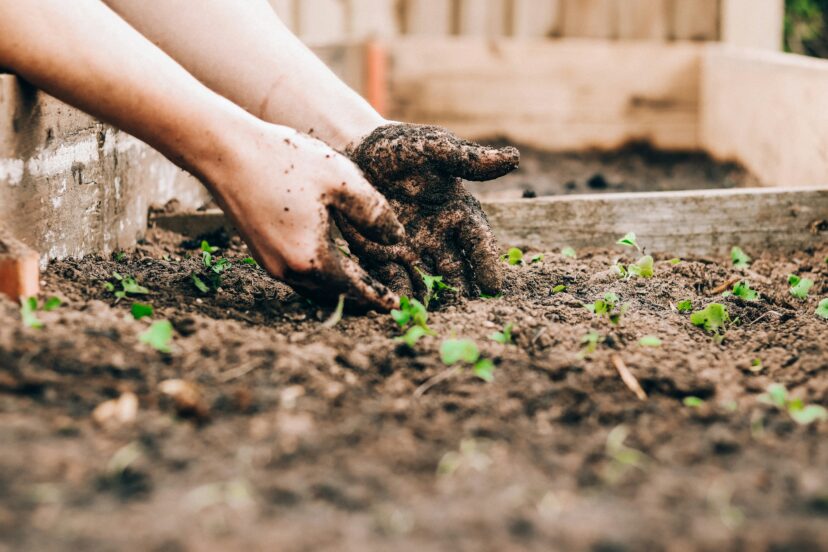
Helpful Gardening Tools and Guides for Pairing Crops
Want to make companion planting even easier and more rewarding? Here are five gardener-approved products from Amazon that can help you plan, plant, and harvest your best garden yet:
The Vegetable Gardener’s Bible — A classic resource packed with practical advice on organic gardening methods and time-tested companion pairings.
Raised Bed Garden Planner — Perfect for mapping out your garden layout, tracking companion plant combos, and recording notes season after season.
Heirloom Vegetable Seed Starter Kit — Try classic crop combinations with non-GMO seeds that help you experiment and grow a healthier garden.
Beneficial Insects Garden Flower Mix — A ready-to-sow seed mix designed to attract pollinators and helpful insects that support natural pest control.
Garden Companion Planting Chart — A quick-reference chart you can stick right on your shed door or fridge, so you never forget which crops help each other thrive.
These practical tools and guides make it simple to follow this companion planting guide, protect your harvest naturally, and enjoy a healthier, more balanced garden.
Scientific Evidence Behind Companion Planting
Modern studies back up what gardeners and homesteaders have practiced for centuries. For example, this garden-scale companion planting study found that planting basil with tomatoes can improve yields and help manage pests naturally. Broader overviews like Wikipedia’s guide to companion planting also summarize how strategic plant pairings deter pests, attract beneficial insects, and boost soil health, making your garden more resilient and productive.
Final Thoughts
Companion planting is one of those timeless practices that connects you with nature while giving you a healthier, more productive garden. Whether you’re growing tomatoes with basil in a backyard raised bed or planting the Three Sisters in a large homestead plot, you’re setting yourself up for success.
It’s a gentle reminder that your garden works best when it’s treated as a living community — each plant supporting another, just like neighbors helping neighbors.
Ready to give it a try? Pick at least one combo from this companion planting guide and see how your garden responds this season. Your soil, your harvest, and the bees will thank you for it.
FAQs
1. Does companion planting really work?
Yes! While not every combination is scientifically proven, many gardeners swear by the classic pairings for pest control and soil improvement.
2. Can I use companion planting in pots or containers?
Definitely. Just make sure you choose plants that have similar water, light, and soil needs.
3. Are there plants that shouldn’t be grown together?
Yes — for example, beans and onions don’t play well together, so do your homework before planting.
4. How much space do I need for companion planting?
You can do it in any space — from large homestead gardens to small urban balconies. Just adjust your pairings and spacing.
5. Which source is the greatest for finding out more?
University extensions like Penn State’s Cooperative Extension are a great place to start, along with trusted gardening books.

